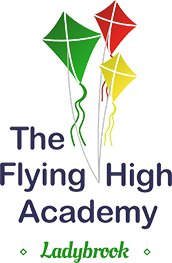Phonics
At Flying High Academy Ladybrook, we know that learning to read is one of the most important skills our children will develop during their time with us. A strong foundation in Phonics gives children the tools they need to become confident, fluent readers and enthusiastic writers.
F2 to Year 2
From F2 through to the end of Autumn term in Year 2, we follow the No Nonsense Phonics scheme, with a consistent approach across all classes. Each lesson follows the same sequence, a multi-skills lesson, where a new code (sound-spelling correspondence) is introduced, and a mini-story lesson, where children practise reading that code within the context of a story. This daily routine ensures that new knowledge is systematically taught, recapped, and revisited. Children are given frequent opportunities to practise their reading skills and build fluency. All children are regularly assessed, and those who need extra support receive additional practice throughout the day to help secure their learning and close any gaps.
What Phonics Looks Like at Flying High Academy Ladybrook
At Flying High Academy Ladybrook, children take part in daily phonics lessons from F1 to Year 2. We use a consistent approach across all classes to ensure clear progression and continuity in learning. Throughout their lessons, children have plenty of opportunities to revisit and practise sounds and words, helping them to build fluency and confidence. Our teachers use a wide range of engaging resources, games, and activities to make phonics enjoyable and memorable for every child. Regular assessment takes place so that we can carefully monitor progress and provide additional support for any children who may need extra help.
By the end of Year 2, our aim at Flying High Academy Ladybrook is that every child leaves with the phonics knowledge and reading confidence they need to access the wider curriculum and enjoy a lifelong love of reading.
For further information and free resources to support learning at home visit - Phonics Intervention - No Nonsense Phonics by Debbie Hepplewhite
A key component to getting Phonics right is the correct pronunciation of the codes (letters and groups of letters). If you would like to hear how we pronounce some of the codes in school, to support your children at home, take a look at the following video:

